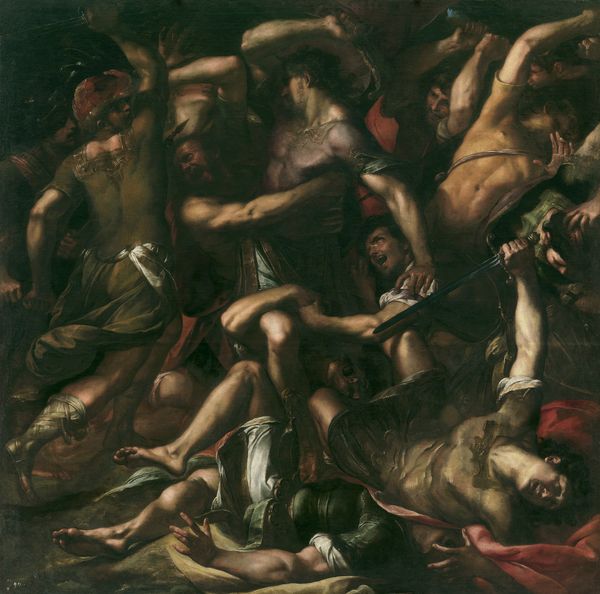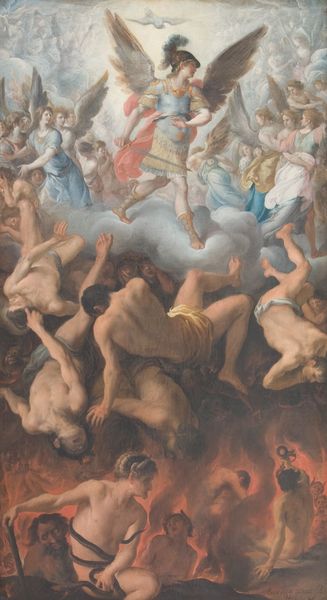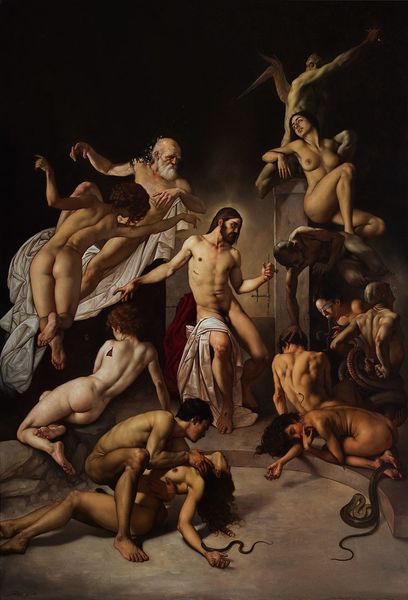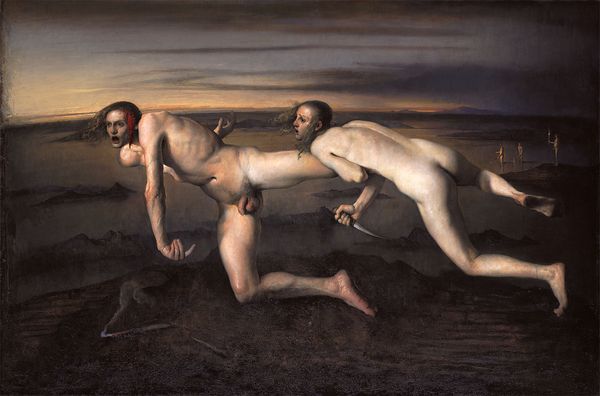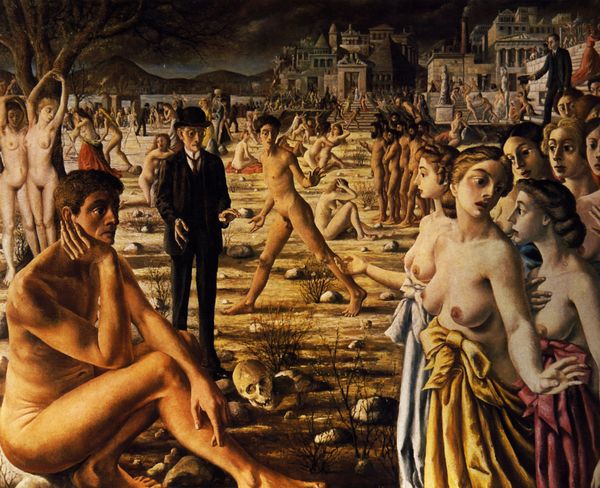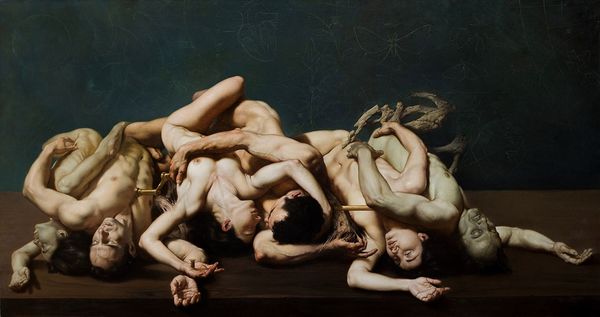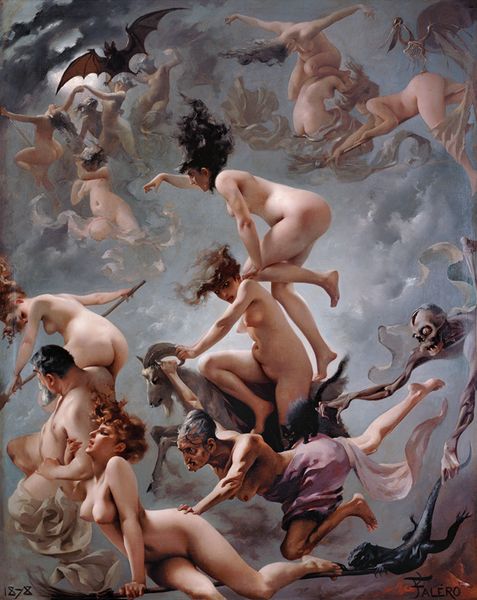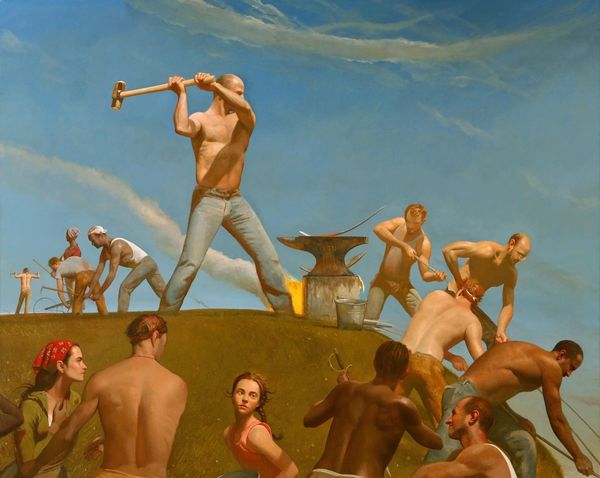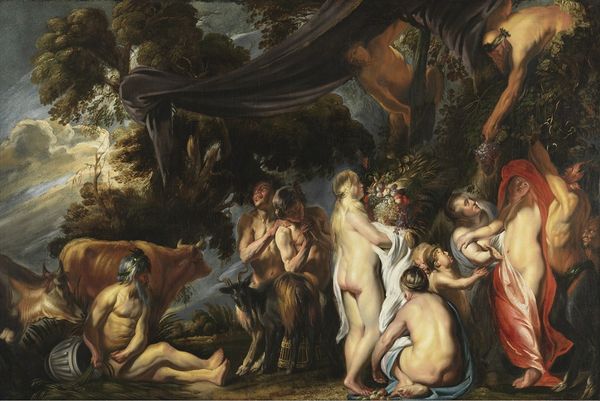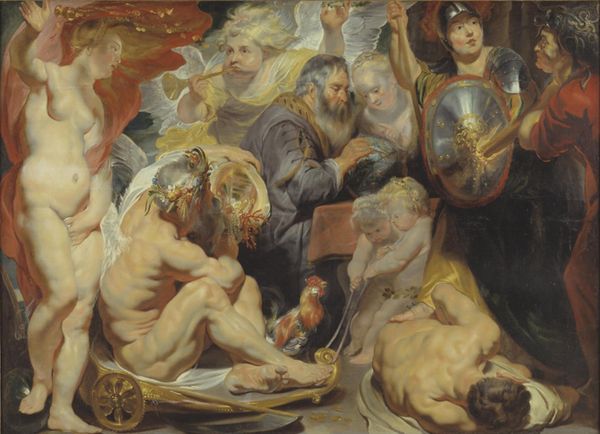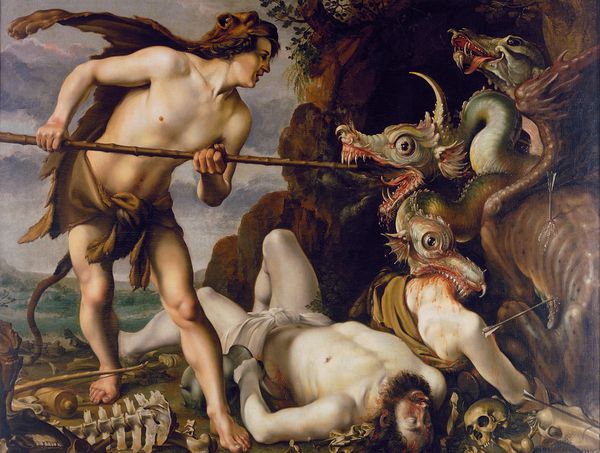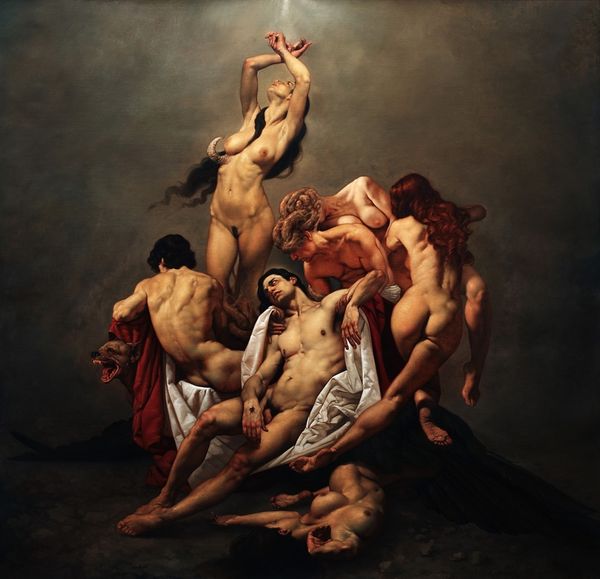
painting, oil-paint
#
painting
#
oil-paint
#
mannerism
#
figuration
#
oil painting
#
group-portraits
#
history-painting
#
nude
Dimensions: 239 cm (height) x 307 cm (width) (Netto)
Editor: We're looking at "The Fall of the Titans," painted between 1588 and 1590 by Cornelis Cornelisz. van Haarlem. It’s an oil painting. I'm immediately struck by the sheer number of bodies and the dynamic chaos. What do you see in this piece? Curator: What I find compelling is the Mannerist manipulation of form. Look at the almost frantic energy conveyed through the contorted bodies. It’s not just about depicting a story; it’s about pushing the material limits of oil paint to create a spectacle. What kind of patronage allowed an artist to explore themes such as these with such... ferocity? Editor: Do you mean that the client perhaps sought to showcase such a dramatic style, like baroque or rococo? Curator: Exactly! Patronage shaped the very materials available to Van Haarlem, as well as the socio-political landscape in which the painting existed. Were the pigment choices deliberately bold to appeal to a particular type of collector or political faction? Editor: That's a really interesting way to consider the artist's choices. So, by understanding the social and economic context, we can better understand not only what's depicted, but how and why? Curator: Precisely. The availability of specific pigments, the commission fees, even the intended display space – all materially affected the final artwork, don't you agree? Editor: I definitely agree. I'll look at materiality in new light, not only through the painterly surface, but in terms of commerce, social class, and labour as well. Curator: Good! It’s all about how art comes to be shaped by human agency and materials at hand, in this case, oil on canvas in 1590!
Comments
Join the conversation
Join millions of artists and users on Artera today and experience the ultimate creative platform.
statensmuseumforkunst almost 2 years ago
⋮
We see a number of naked men falling, shouting and screaming, into an abyss. The figures whirl and spin down towards us, helpless. The artist has done much to showcase his skill in depicting the body from all angles. Having lost the struggle for dominion over earth to the Olympian gods, the Titans are hurled down into Tartarus, an underworld located even further down than Hades in Greek mythology. At the time the painting was created the titans were viewed as symbolic figures representing those who could not control their urges. The figures' genitals are covered by butterflies and dragonflies, which may be symbols denoting homosexuality. The Titans are being cast into the underworld, but here it appears as if they are being cast down to us, and the depiction is full of both intensity and pity
statensmuseumforkunst almost 2 years ago
⋮
Ovid's Metamorphoses relate the tale of Cronus and the titans, the ruling clan of gods, who challenged the Olympian gods in a cosmic battle. The titans lost and were cast down into the underworld, Tartarus. The leader of the titans, Cronus, first became ruler of the world by castrating and overthrowing his father, Uranus. A lust for power and a sense of paranoia prompted him to turn against his brothers, the Cyclopes and the Hecatonchires. Most of all, however, he feared his own children and so ate them, one by one, immediately after they were born. The subject reminds its owner and everyone else of the dangers inherent in putting all human concerns aside in one's pursuit of power and personal gain. Cornelis Cornelisz. van Haarlem's painting is an example of the so-called Haarlem Mannerist style which emphasised the artificial and the sensuous. The style first emerged at the court of Rudolph II in Prague and subsequently spread to the North, where the Danish king Christian IV embraced it.
statensmuseumforkunst almost 2 years ago
⋮
The Roman poet Ovid’s Metamorphoses relate the story of a reigning race of gods consisting of the titans, the cyclopes, and the giants who were challenged to a cosmic battle by the Olympian gods headed by Zeus. The fierce battle, the so-called titanomachia, ended with the defeat of the titans whom Zeus cast down into Tartaros, the underworld, from where they cause earthquakes and volcanic eruptions. The artistic ideals Cornelis Cornelisz van Haarlem brought all his artistic ideals to bear in the naked muscular bodies and the complicated poses. Studies from the nude did not become common until the late 17th century, but in Haarlem Karel van Mander (1548-1606) founded an academy that did not only use academic nudes for practice, but which also debated art theory. An example of the Haarlem Mannerist style This painting is an example of the resultant Haarlem Mannerist style. Mannerism is a designation used for a style between the Renaissance and the Baroque that celebrated the artificial and the sensual. The style was cultivated in places such as the court of Rudolph 2. (1552-1612) in Prague and travelled north, winning over royals such as the Danish King Christian 4. (1557-1648). The Fall of the Titans was among the Dutch paintings purchased by him in 1621.
